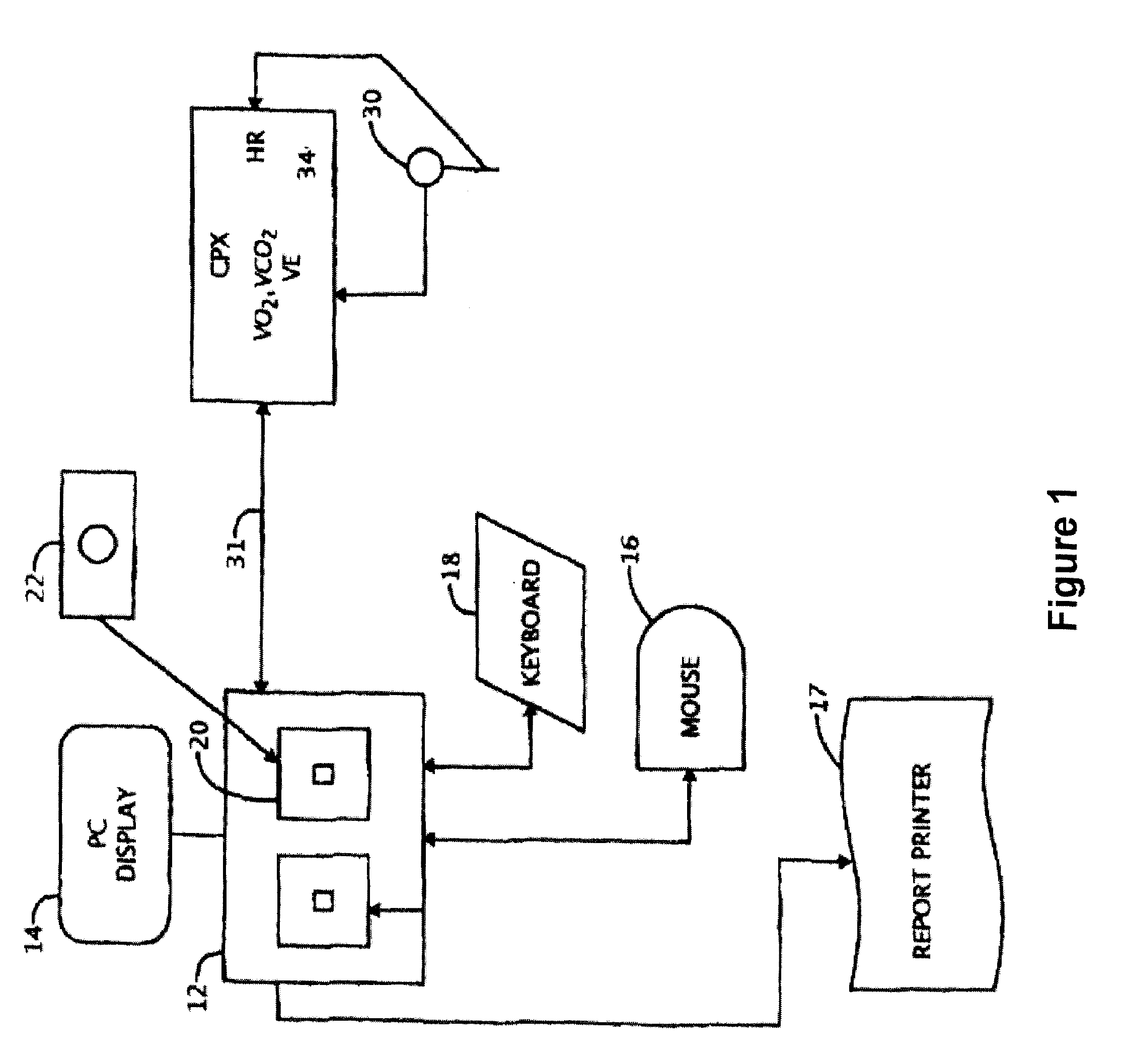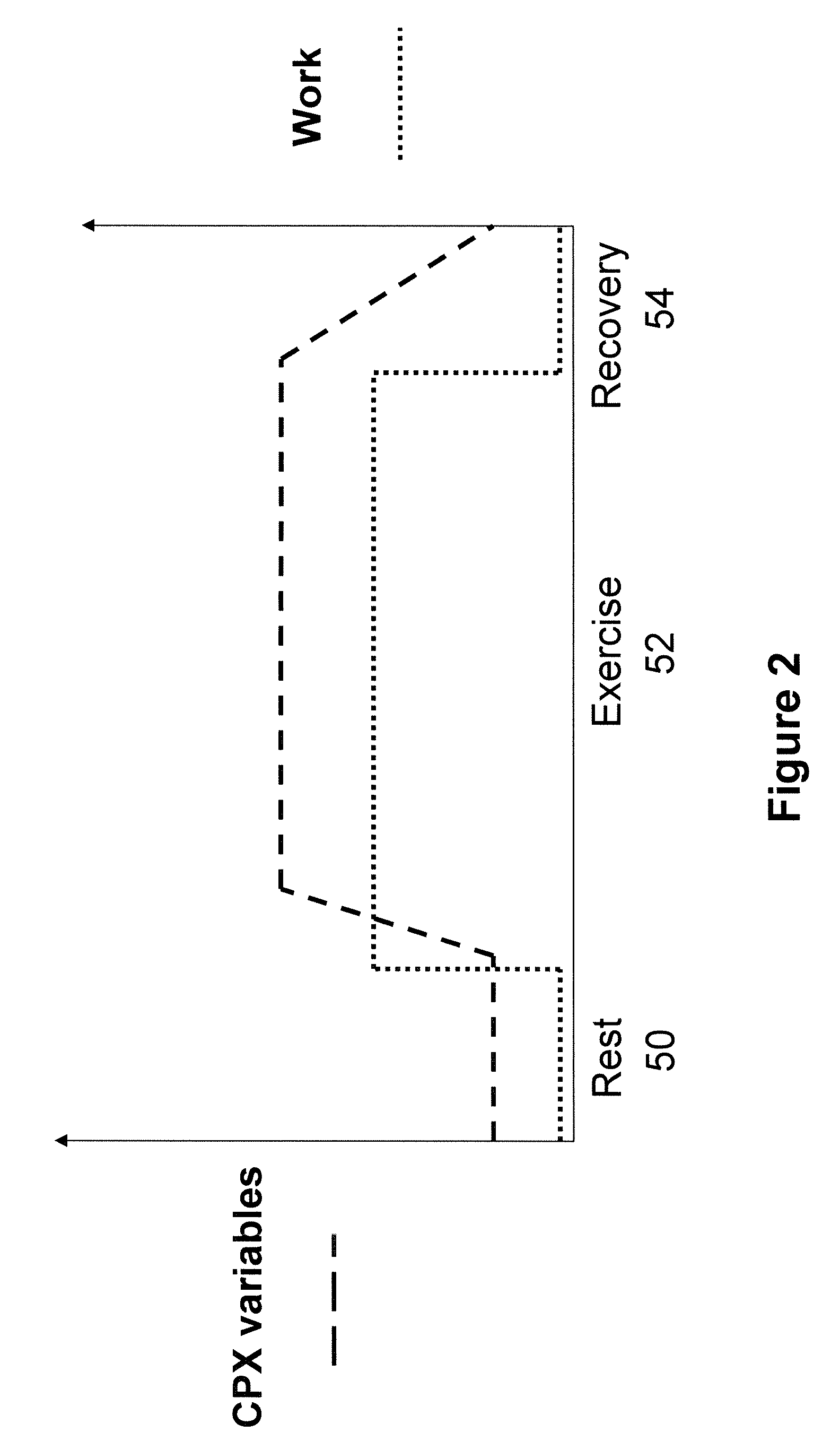Pattern Recognition System for Classifying the Functional Status of Patients with Chronic Disease
a functional status and pattern recognition technology, applied in the field of medical diagnosis, can solve the problems of increased discomfort, increased risks, and high cost of testing, and achieve the effect of ventilating efficiency
- Summary
- Abstract
- Description
- Claims
- Application Information
AI Technical Summary
Benefits of technology
Problems solved by technology
Method used
Image
Examples
Embodiment Construction
[0031]The following detailed description with respect to patient data is intended to be exemplary of a preferred method of utilizing the concepts of the present invention and is not intended to be exhaustive or limiting in any manner with respect to similar methods and additional or other steps which might occur to those skilled in the art. The following description further utilizes illustrative examples, which are believed sufficient to convey an adequate understanding of the broader concepts to those skilled in the art, and exhaustive examples are believed unnecessary.
[0032]General Considerations
[0033]The present invention involves a pattern recognition system which includes data gathering, feature extraction and classification aspects. Data is taken by a cardiopulmonary exercise gas exchange analyzer that gathers observations to be classified or described. A feature extraction mechanism computes numeric information from the observations and a classification or description scheme ...
PUM
 Login to View More
Login to View More Abstract
Description
Claims
Application Information
 Login to View More
Login to View More - R&D
- Intellectual Property
- Life Sciences
- Materials
- Tech Scout
- Unparalleled Data Quality
- Higher Quality Content
- 60% Fewer Hallucinations
Browse by: Latest US Patents, China's latest patents, Technical Efficacy Thesaurus, Application Domain, Technology Topic, Popular Technical Reports.
© 2025 PatSnap. All rights reserved.Legal|Privacy policy|Modern Slavery Act Transparency Statement|Sitemap|About US| Contact US: help@patsnap.com



